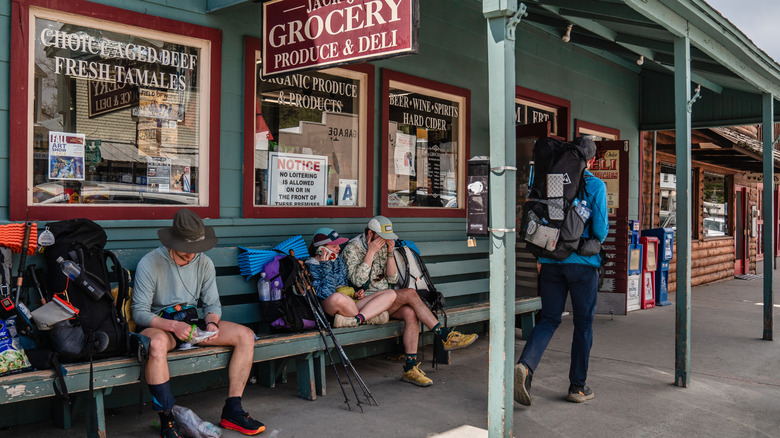The full length of the Appalachian Trail (AT) is about 2,190 miles. This is a nice, round number. It’s memorable, and you can easily divide it into doable segments. Can you hike, say, an average of 12 miles per day? If so, the whole trip should take you about 183 days, or about six months. Cool! Sounds like you have a timetable! This is just one of the simple steps to prepare yourself for a long-distance hike.
But wait: You should also factor in rest days. Hiking 12 miles from sunup to sundown will wear on your body. Even seasoned athletes get sore joints, catch colds, and have to dry themselves out after heavy rains. This will add time to your journey, so maybe add a couple of weeks? How does six-and-a-half months sound?
Sorry, one more thing — what about “bonus miles”? Sure, the distance from the AT trailhead on Springer Mountain, Georgia, and the terminus on Mt. Katahdin, Maine, is about 2,190 miles, but you don’t really expect to walk straight from one to the other, do you? You’ll have to buy food along the way. You’ll have to replace equipment, mend clothing, and occasionally bathe. This is one of the harsh realities of taking very long treks on foot: Most hikers have to leave the trail every few days to reconnect with civilization. The distance you plan to traverse doesn’t include those side trips, those so-called bonus miles. These miles burn a lot of time and energy, and first-time thru-hikers may forget to factor them in, which can lead to a rude awakening down the line.
The cumulative effect of hiking bonus miles
According to the Appalachian Trail Conservancy, hikers routinely leave the established route every three to five days. You can only carry so much food and water, and the days of foraging for food in the wilderness are long past. This isn’t just an Appalachian thing; any long-distance hike requires periodic visits to developed areas. Ideally, these will amount to brief shopping trips, but plenty of hikers need to hole themselves up in hotels in order to heal blisters, beat sickness, and replenish calories.
Not surprisingly, these kinds of trails don’t typically converge with major roads. That’s part of their appeal, of course; the Pacific Crest Trail wouldn’t feel like much of an escape if the path ran through housing developments and strip malls. But this also means that hikers have to plan their jaunts into town, which can mean straying miles from the official route. If you have to hike 3 miles to Costco and 3 miles back, you may burn half your daylight hours, and you’ll just have to repeat the process three to five days from now. For longer diversions, you may have to tack on meals and lodging that have little to do with your A-to-B itinerary.
Some cases can be extreme. Because a special permit program ended in 2025, hikers of the Pacific Crest Trail face an extra challenge at the Canadian border, which might mean days of complex circumnavigation. Most of these side trips are much shorter, but the cumulation of extra time can be shocking.




